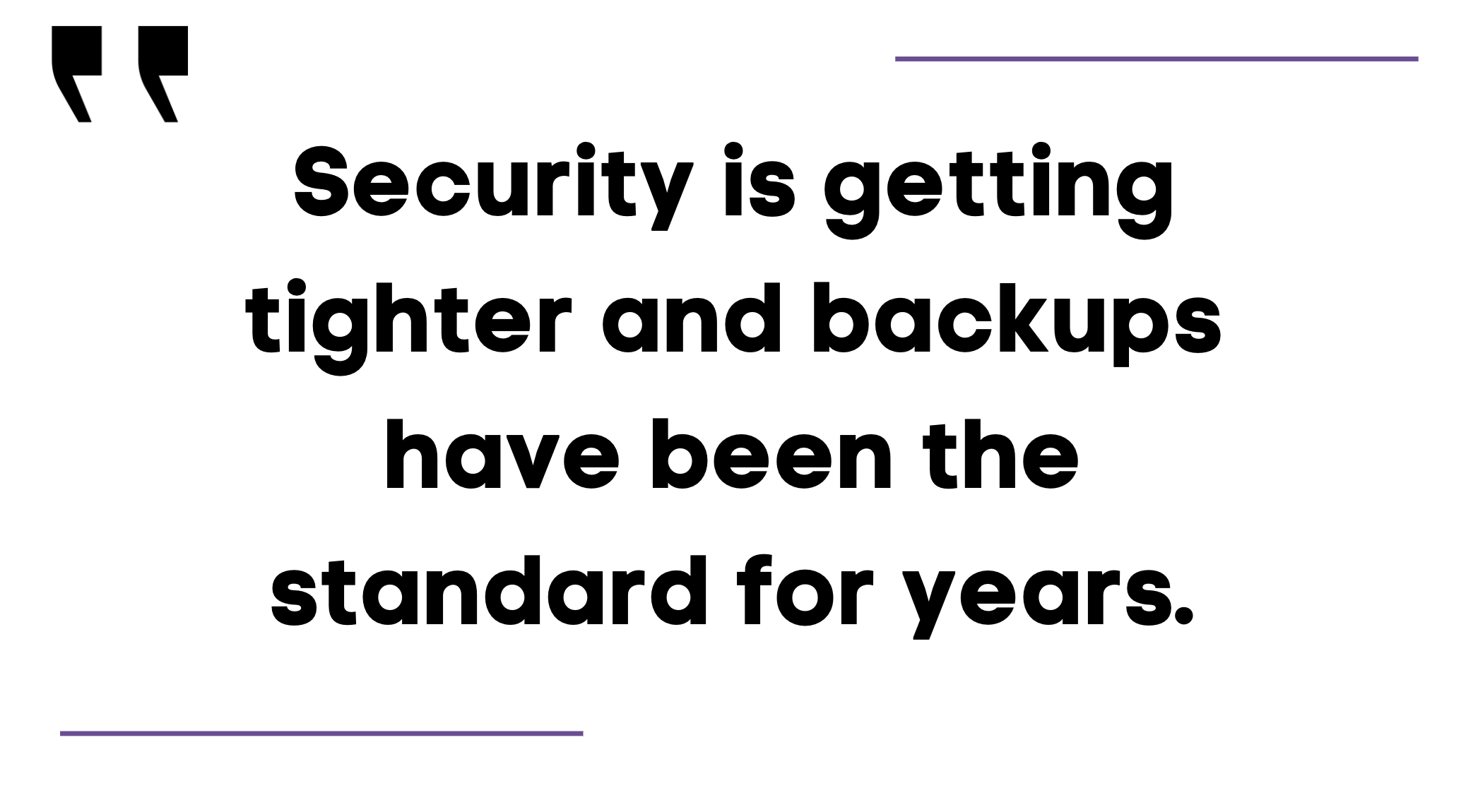Properly Storing Data
Storage isn’t as cut and dry as you think. Just like physical storage, there’s a few different ways you can go about this. Each degrades at different rates, and backups will need to be made in specific ways. There’s a lot to cover, so let’s dive in.
First, you need to pick a method. There are pros and cons to each, but a lot of it comes down to what will work best for your specific and unique needs.
 Desktop Storage
Desktop Storage
This is probably the least desirable method for staring data. It’s what most small businesses already do. Leave the data on a local computer hard drive. It quickly becomes disorganized and is vulnerable to viruses, theft, water damage, and a plethora of other dark fates. It’s best to quickly move on from this stage as quickly as possible in order to protect your data as effectively as possible.
Cold Storage
This includes separate drives, such as flash and thumb drives, as well as SD cards, dvds, and blu-ray discs. This is the natural next step from desktop storage. Solid-state hard (SSD) drives are extremely stable if they aren’t constantly being written and rewritten, so it’s important to look into what kind of storage and for how long you’ll need it. This will allow you to pick the most stable form of storage available, and we can help you pick the most cost-effective option! There are nearly endless varieties when it comes to “cold storage,” so don’t be afraid to ask.
For example, one of the main problems with dvds is the fact that they degrade quickly, requiring you to replace them every 5-10 years. However, they are extremely cheap compared to some of the other types of cold storage. Depending on how much data you need to back-up, this might be a great option. You also need to consider the physical space that you’ll be using to get the most life out of the physical products that you buy. Somewhere cold and dry will be the best for your USB drives and discs, so make sure you have somewhere you can store these devices. Throwing a box in a garage doesn’t cut it anymore, not that this was ever good for paper in the first place.
Cloud Storage
Obviously, we were going to end up here. Everybody is talking about “the cloud” these days. In reality, as I’m sure you’re aware, it’s not a real cloud. It’s just a server connected to the internet. You’re paying to store your files and information on someone else’s cold storage that they maintain and backup themselves. It’s a near-guarantee that your data will be protected, though there have been a few mishaps over the years. However,. If you go with a reputable company, you really can’t find a better option for the money.
Here’s a few examples of the big names in cloud storage:
iCloud: Apple’s cloud solution offers users 5GB of free storage. Windows users can also sync their files with iCloud Drive. This is ideal for Apple users, as it syncs with many devices and can be updated automatically. Extremely convenient, and cost-effective. iCloud has changed the game (as Apple tends to do) when it comes to cloud storage.
Google Drive: Google’s service is integrated with Android devices. Windows and Mac users can download a desktop application for drag-and-drop capability. The service includes 15GB of free storage. You can’t beat the 15GB, and if you don’t run an Apple system, this is definitely a strong contender.
OneDrive: It’s accessible through Windows 10’s file explorer. Android and iOS devices access the site through an app. Mac users can also download an app from the Mac App Store. OneDrive includes 5GB of free storage space. OneDrive is quickly becoming one of the bigger names in the game, despite being relatively new. Features abound with this product, and it’s reliability and price cannot be understated.
Dropbox: It’s been around for a while and offers personal and business subscriptions. The personal account includes 2GB of free data. Ol’ reliable. Everybody knows Dropbox. It’s easy to use, and even your less-technologically-savvy staff will easily be able to update their records and keep your data secure on the cloud. Highly recommended.

Now that we’ve covered the specific types of storage, we need to talk about techniques and strategy. File-type is also important to consider when backing up your data, regardless of what method you chose.
“To preserve documents long-term, it’s best to break them out of proprietary formats (like Photoshop and Microsoft Office’s .doc and .xls) to Open Document Format (ODF), Open XML, or perhaps PDF.”
The main problem you will run into is the fact that certain files will be difficult to open in the future. For example, Word files from the early 2000s will have glitching and formatting issues, and in a few years, they might not open at all, depending on how Microsoft updates their software. This happens with older image files and other proprietary file types. If a company goes under and you have no way of re-downloading a program to open a particular file-type, you’re gonna be in a heap of trouble.
Finally, let’s talk about your legal obligations. You need to determine what level of data compliance you are under as a company and then establish a data retention policy. Setting the right data retention policies is a necessity for both internal data governance and legal compliance, as some of your data must be retained for many years, while other data may only be needed for days. Determining this will allow you to figure out what data needs to help held where, and for how long, and will streamline and optimize your process.

